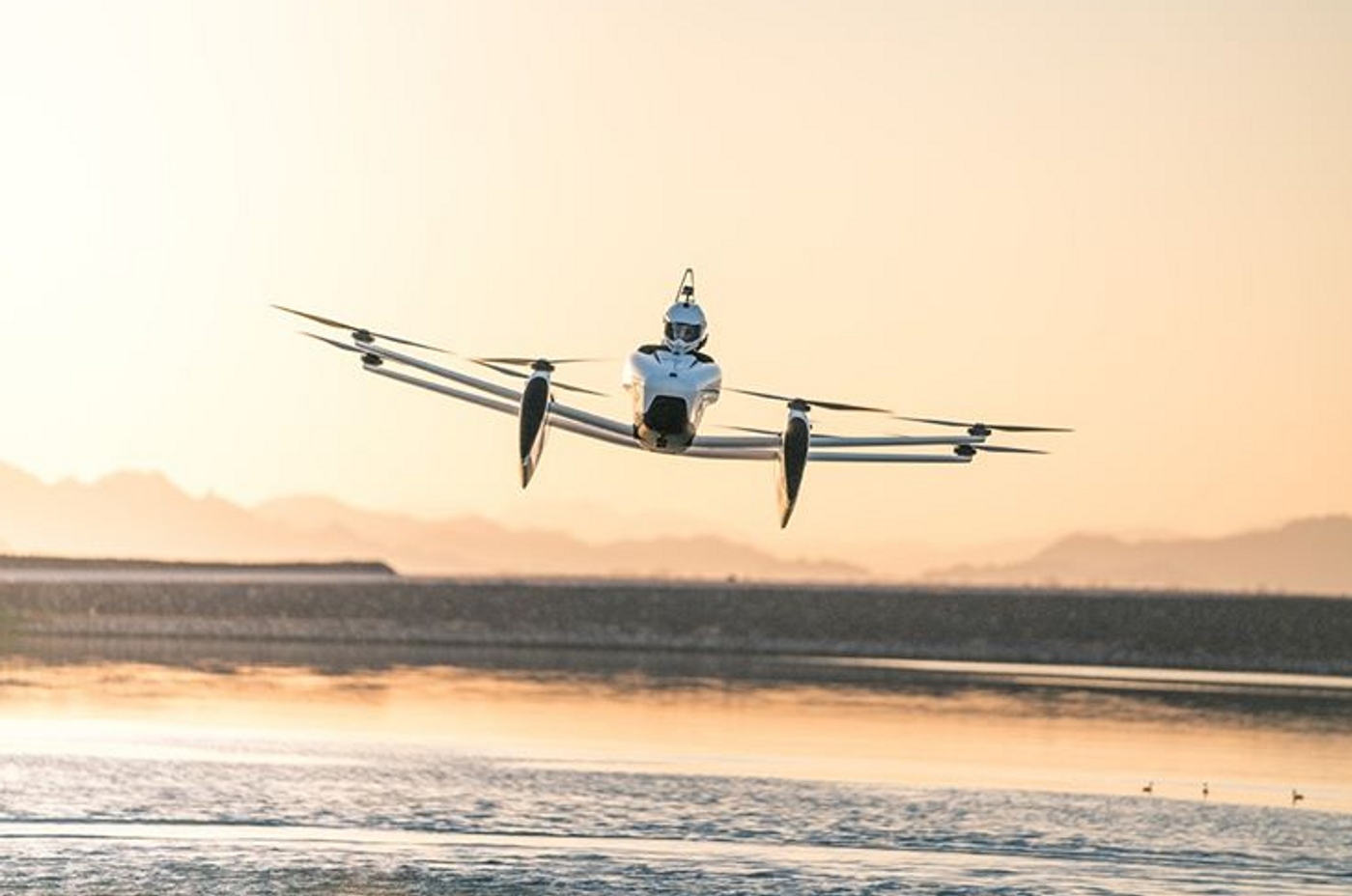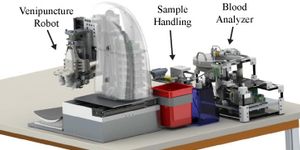Watch: Personal Flying Car Takes Off
In June 2018, Kitty Hawk, a company in Las Vegas backed by Google Co-founder Larry Page, invited media reps to pilot the latest version of their “personal flying vehicle,” the Flyer. Rachel Crane of CNN demonstrated the accessibility of the craft, taking it for multiple spins over Lake Las Vegas after a brief training session. No pilot’s license is required to pilot the single-seat electric vehicle, and Kitty Hawk sees it as a milestone on the road to normalizing individual flight.
“The mission of Kitty Hawk is to get everybody to fly every day and get rid of traffic,” Kitty Hawk CEO Sebastian Thrun told CNN.
In 1903, the Wright Brothers famously took off in the first powered airplane called the Flyer in Kitty Hawk, North Carolina. The modern Flyer was designed by Chief Engineer Todd Reichert, who broke the land-speed record in 2016 with an egg-shaped bicycle design and has a Guinness World Record and Sikorsky prize in vehicle design as well.
The Flyer is 250 pounds, which keeps it just below the Federal Aviation Administration, or FAA, rule that this kind of Aerial Recreational Vehicle, or ARV, weigh no more than 254 pounds. They are also called ultralights and are restricted from flying over people or at night.
The Flyer can be piloted with two joysticks reminiscent of early video game controllers. It has 10 propellers and a maximum speed of 20 mph, and its “ceiling” or top altitude is currently about 10 feet. Its battery holds a charge for about 20 minutes.
"It's as easy to use as playing Minecraft," Thrun said.
A helmeted Crane flew the recreational craft at about 6 mph, between about three and 10 feet over the water. A mission control team communicated with her and offered guidance through her helmet during the flights.
Before taking off, she completed a 90-minute training.The Kitty Hawk team hopes to eventually get this class time down to approximately five minutes of instruction. One of the more challenging preparation tasks Crane was given was being placed in the Flyer upside down in a ball pit, where she had to practice unbuckling herself. This experience was designed to prepare pilots for a potential scenario in which the Flyer crashes upside down in the water.
"The joystick is so intuitive, but it's not the most comfortable thing I've ever sat in. You definitely feel the vibrations,” Crane said of her test flights.
Kitty Hawk has been running the Flyer training center for several months and about 1,500 of its employees have now taken to the air. A previous Flyer model underwent 1,200 tests in 2017. Business partners and social influencers will be invited to try the Flyer next, and pre-orders are already available. Kitty Hawks’ plan is to make the early sales agreements with companies such as amusement parks, which would buy a whole fleet of Flyers.
"We want to design something that's truly useful, and that will improve the way people carry themselves around," Reichert said.
Check out CNN’s Crane in flight:
Sources:









